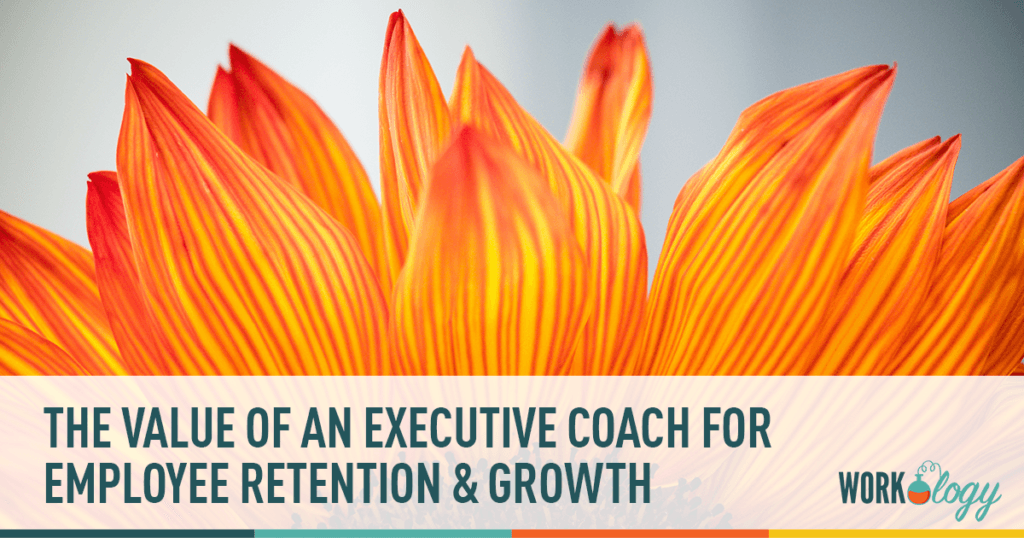Hiring and retaining top talent is the single most important factor for business success. Without a strong employer brand, any company struggles to compete for talent. There is a lot of data on what next-generation candidates and employees expect from employers, and training and development consistently tops these lists. Additionally, addressing a future skills gap as an exodus of experienced Boomer employees leave the job market, isn’t possible without offering development opportunities to your existing workforce. This is where executive and leadership coaching comes in.
The Value of an Executive Coach for Employee Retention & Growth
Companies are facing a trifecta of challenges for recruiting and retention: A near-zero unemployment economy, the expectations of your next-generation workforce, and a growing skills gap that is already creating labor shortages in some industries. Employee engagement is crucial, which means we have to walk the walk if we talk the talk: we can’t just add a bulleted item to our employer brand list for career development; we have to have a program in place that our workforce wants to be part of, that they will adopt willingly, and that assures them that we are invested in their future with our company. There are several areas a coaching program can improve, and I’ve listed four of them below.
1. Personal development. This is important for everyone, but it is especially critical for businesses to think about when creating learning and growth opportunities for an existing workforce. Your leaders must be prepared for the future success of your company, but many companies are falling short. According to the Global Leadership Forecast 2018, published by DDI, 67% of Gen X leaders said they would like more external coaching and 57% want external development. The research also shows that CEOs are more concerned about developing “next gen” leaders than they are about any other issue, including cyber-security, global recession, and political uncertainty. And only 14 percent of CEOs say they have the leadership talent they need to execute their strategy.
It’s important that we offer resources to develop good leaders, and this starts with personal development coaching to help your current workforce grow into your future leaders. As HR professionals, we have to consider how we introduce this type of training and encourage adoption of the opportunity. Personal development is hard. It requires the person to face some things about themselves that they have been avoiding or completely unaware of. It’s helpful to offer both formal classes and seminars along with one-on-one coaching, taking each person’s learning style into account, along with their comfort level for sharing challenges in a group class setting.
2. Closing the skills gap. According to a McKinsey survey, executives increasingly see investing in retraining and “upskilling” existing workers as an urgent business priority. Sixty-two percent of executives believe they will need to retrain or replace more than a quarter of their workforce between now and 2023 due to advancing automation and digitization. This is at the heart of training and development for your existing workforce. You’re going to need employees prepared to move up within the company.
3. Better managers. Consider that employees don’t leave companies; they leave their managers. Employee engagement is imperative for retention, so poorly trained managers can have a direct impact on your company’s bottom line. According to Gallup’s State of the American Manager: Analytics and Advice for Leaders report, managers account for at least 70% of the variance in employee engagement. In other words, a bad manager equals low employee engagement, while a good one equals high engagement. While great employees don’t always make great managers, many qualities of leadership can be developed through coaching programs.
4. Talent mobility. A formal employee development program allows you to create a strong leadership pipeline while improving engagement and retention. According to a report by Global Human Capital Trends, 53% of younger workers want to take on leadership roles, but only 6% of organizations have strong leadership programs in place. Having a growth-oriented coaching program in place means you are able to see how employees perform in a variety of roles, and use data from learning and performance activities to identify leadership candidates. Engagement and retention is improved because employees have ongoing potential to achieve new goals and meet new challenges, create meaningful connections, and build new skills.
Finally, executive coaching can positively impact employee experience by ensuring employees feel that they have a future within your organization. Engaged employees are more productive, innovative, and report higher job satisfaction. Your company’s investment in providing learning and development opportunities reinforces your commitment to supporting your current and future workforce.









